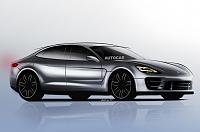Welcome to the Auto Repair Manuals.
Porsche Pajun poised for production
5 stars based on
1 reviews
-
 Porsche Pajun poised for production
Porsche Pajun poised for production

Similar Threads
-
By Auto News in forum AutoNews
Replies: 0
Last Post: 18.02.2014, 09:06
-
By Auto News in forum Avtomir - miscellaneous
Replies: 0
Last Post: 31.01.2014, 02:40
-
By Auto News in forum AutoGuide
Replies: 0
Last Post: 30.01.2014, 02:51
-
By Auto News in forum Detroit Auto NEW's
Replies: 0
Last Post: 28.01.2014, 12:19
-
By Auto News in forum News
Replies: 0
Last Post: 24.12.2012, 08:54



 LinkBack URL
LinkBack URL About LinkBacks
About LinkBacks